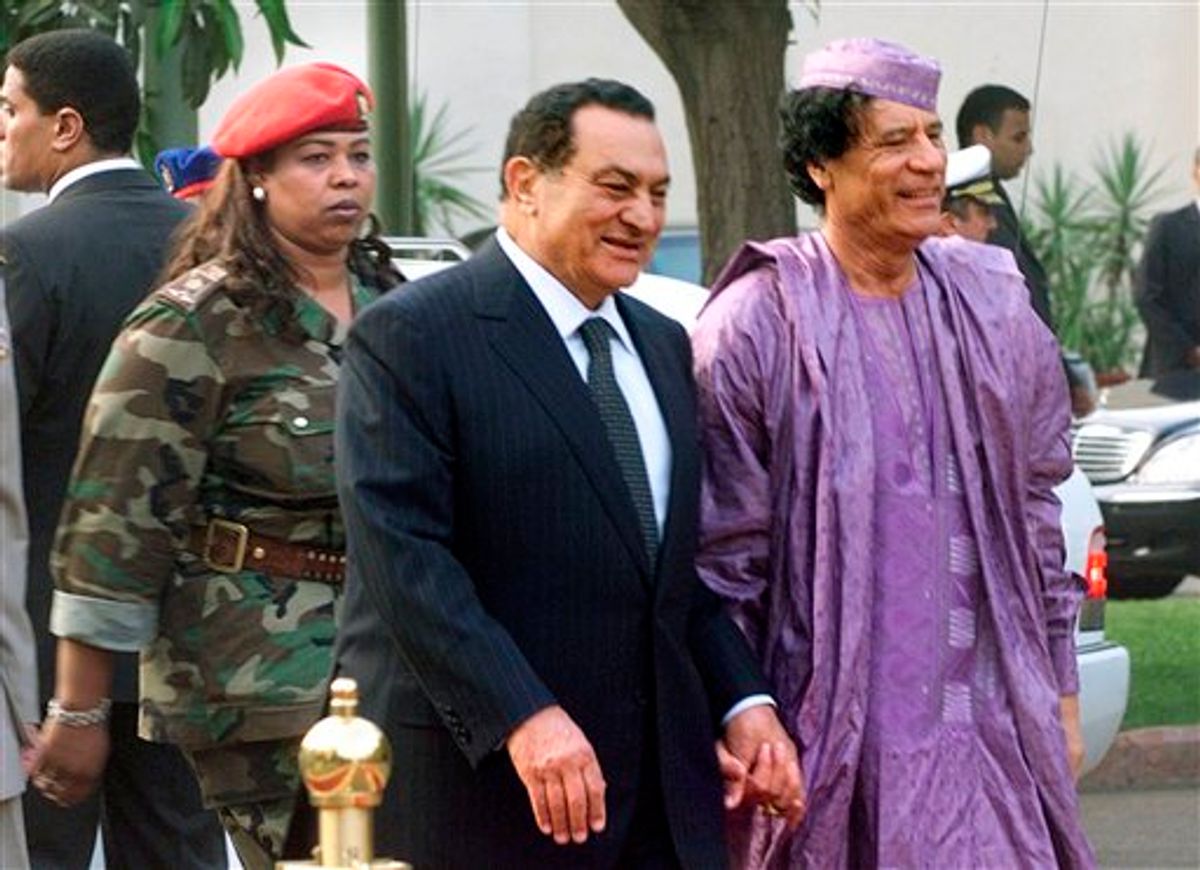After a relatively modest protest broke out early Wednesday in Libya, citizens organized today's "day of rage," a nationwide protest organized largely through social media. But unlike its similarly protesting neighbors in North Africa, Libya is rich with oil money, and it is using that wealth to literally pay protesters off. But not all of them: As many as 20 people have died as a result of protests so far.
What can Libya's past tell us about what's happening there now? Like many countries in the region, Libya is a post-colonial nation that, after claiming independence for itself, let its people suffer. But the past 50 years have been significant for both the United States and Moammar Gadhafi, the Arab world's longest-serving leader.
- Libya was ruled by the Ottoman Empire until 1911, when it was claimed by imperialist Italy. After the defeat of the Axis Powers in World War II, the United Nations took over the country and passed a resolution granting it independence in 1951. Upon receiving its freedom, Libya established a hereditary monarchy and anointed Idris, a religious leader, as king.
- During Idris’ reign, the country discovered its oil reserve, and Libya fast became extremely wealthy. The rapid influx of wealth led to resentment among the influential class, who believed the monarch was squandering the money. In 1969, spurred by the nationalist revolution in Egypt 18 years earlier, army Col. Moammar Gadhafi successfully staged a bloodless coup.
- Gadhafi came to power when the United States and the Soviet Union were competing for world dominance. But Gadhafi wasn't interested in playing the ally to either country and instead envisioned a form of government he called the Third Universal Theory. This "middle path" is essentially a socialist form of direct democracy, wherein people would rule themselves through local councils, and all industry would be state owned. As early as 1973, the U.S. government pulled its ambassador from the country, making Libya into an official enemy of the state. The next 20 years saw a string of sporadic terror attacks (most notoriously, the Lockerbie bombing of Pan Am Flight 103) against the West -- allegedly funded by Libya's oil money -- along with sporadic retaliations.
- After the collapse of the Soviet Union, Gadhafi seemed to change his tune. In 1999 the U.N. dropped the 13-year-old arms embargo against Libya and lifted sanctions prohibiting air travel to the country. Gadhafi renounced terrorism and ended a program to develop nuclear weapons in 2003. Libya and the United States had more or less made peace by 2008, and the phrase "the Libya Model" was coined to mean peace reached through negotiation.
- Today, Libya is an American ally, and as the case has been, America looks the other way when it violates the rights of its people. For example, despite human rights watchdog groups' condemnation, Libya was appointed to the United Nations Human Rights Council in 2010.
The current situation changes things. Gadhafi’s restrictions of liberty are now a viable -- and very relevant -- topic of discussion. It should be noted that these restrictions are significant, and many of them stem from Gadhafi's statism. The country's glut of oil money spreads no farther than the ruling class, thus creating one of the worst income disparities in the world. A third of the population lives in poverty.
Like Egypt, Libya is effectively a police state. The Gadhafi-controlled media is a veritable propaganda machine; and oppositional figures are subject to arrest without trial. And like Egypt, the long-simmering discontent erupted as part of a call throughout the world for the powers that be to recognize the fundamental liberty of the people they reign over.



Shares